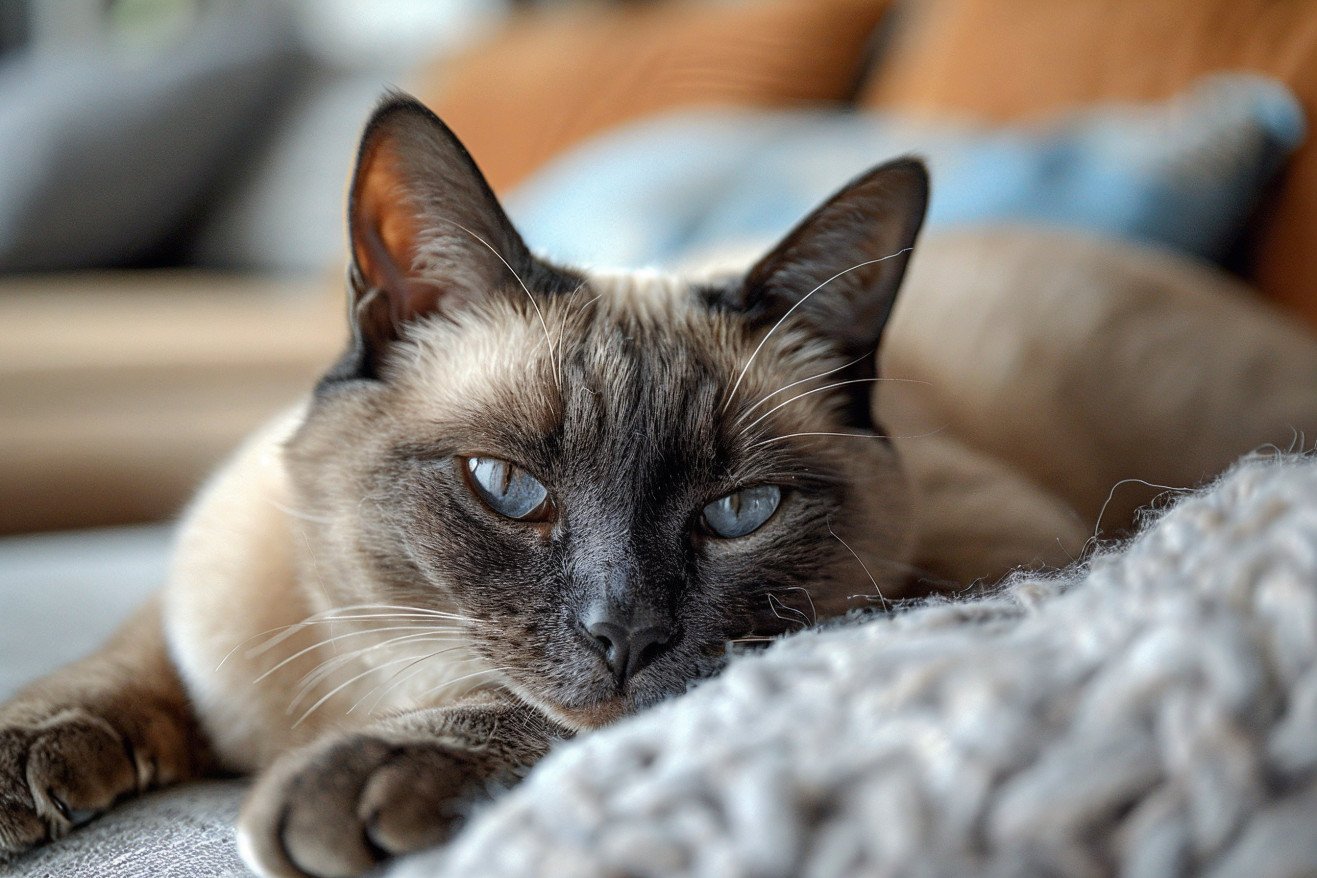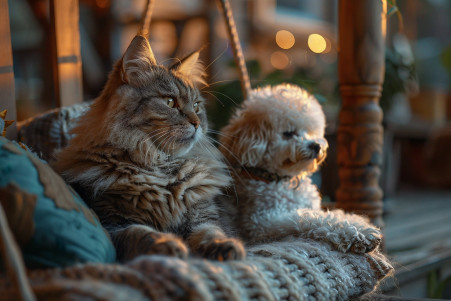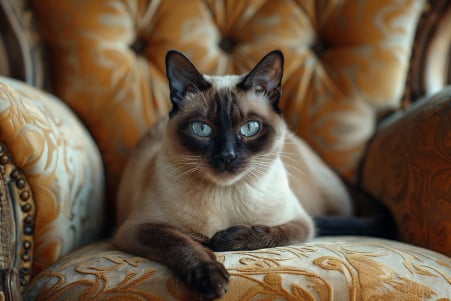How to Tell a Cat's Age: Decoding Physical and Behavioral Signs
22 May 2024 • Updated 22 May 2024

If you've ever rescued or adopted a cat, you know that sometimes it's hard to tell exactly how old they are. However, there are a few ways to determine a cat's age. For example, you can look at their teeth to see if they have tartar or are worn down, check out their coat to see if it's shiny and healthy, and even feel their muscles to see if they're well-toned. You can also look for signs of aging, like hearing loss or weight loss. That said, the best way to determine a cat's age is to take them to the vet.
In this article, we'll go into more detail about how to tell a cat's age, including a look at the different physical and behavioral signs that have been identified by researchers and veterinarians in a number of studies. This information will help you better understand how to estimate your cat's age and make sure that you're providing them with the best care possible at every stage of their life.
How can you tell a cat's age?
Dental Development: A Cat’s Age Can Be Determined by Its Teeth
Kittens are born without teeth, but their deciduous or "baby" teeth start to come in when they are 2-4 weeks old. The baby teeth will start to fall out when the permanent adult teeth start to come in at 3-4 months old, and by the time they are 6 months old, most kittens will have all 30 of their adult teeth.
In young adult cats, the adult teeth will be clean and white, but as cats get older and enter their senior years at 11 years and older, their teeth will start to show wear and tear and will become discolored. By this age, tartar, gingivitis, and tooth loss will also be more common, which are all signs of an older cat.
While a cat’s teeth can provide a lot of information about their age, veterinary experts caution that this method isn’t foolproof. A cat’s teeth can be affected by diet, oral care, and genetics, and the condition and appearance of their teeth can vary at any age. In fact, professional dental cleanings can make an older cat’s teeth look younger than they are.
As a result, while a dental exam can provide a lot of information about a cat’s age, it should be used in conjunction with other physical and behavioral signs. By considering what you know about your cat’s teeth along with their coat, eyes, muscle mass, and activity level, you can get a more accurate sense of their age.
Fur and Skin Quality: Indications of a Cat's Age
Kittens and young cats tend to have soft, sleek, and shiny fur, according to BeChewy. However, as cats get older, their fur may become rough, dry, and thin, and they may experience more shedding. The Spruce Pets explains that older cats may also develop gray or white fur, especially around the face and muzzle.
In addition, a cat's skin may lose elasticity as it gets older, leading to a looser, more wrinkled appearance, according to FoundAnimals. A cat's ability to groom itself may also decrease with age, leading to a matted or disheveled coat.
While these changes in fur and skin can help you determine a cat's age, it's important to note that genetics and other factors can also influence a cat's appearance at any age. The next section will discuss how a cat's muscle mass and body condition can help you determine how old it is.
Muscle Tone and Body Condition: Signs of a Cat's Vitality
Kittens and young cats are often muscular and sleek, with good muscle tone and body condition, according to BeChewy. On the other hand, older cats may have less muscle tone and body condition, which can lead to a more bony or frail appearance.
According to Spruce Pets, senior cats may also have a saggy belly or primordial pouch, which is caused by a loss of muscle tone in the abdominal muscles. In addition, a lack of muscle tone can make it harder for older cats to move, jump, or climb.
That said, a study in the Journal of Feline Medicine and Surgery points out that a cat's muscle mass and body condition can be influenced by a variety of factors, including diet, exercise, and health issues, throughout their lives. As a result, muscle tone and body condition can be used to help determine a cat's age, but they should be combined with other physical and behavioral changes to make a more accurate assessment.
Eye Changes: A Window Into the Aging Process
Kittens and young cats have clear, bright eyes that are free of any visible issues, says the Young-Williams Animal Center. However, one of the changes that occurs as a cat ages is the development of lenticular sclerosis, a hazy, bluish-gray discoloration of the eyes.
In addition, the Hill's Pet website says that older cats may also have more eye discharge, staining from tears, and eyes that look less bright overall. In addition, senior cats may experience vision loss and develop eye conditions such as cataracts and glaucoma.
Although these changes are associated with aging, the Merck Veterinary Manual warns that a cat's eye condition can be affected by medical conditions and injuries at any age. As cats age, owners should keep an eye on their pet's eyes, as well as other changes in their health and behavior that may indicate a need for medical attention.
Behavioral Changes: Signs of Aging in Cats
Kittens and younger cats are often more energetic, playful, and active, according to WikiHow. However, as cats get older, they may become less active, sleep more, and show decreased levels of movement or athleticism. In addition, the Hill's Pet website says that senior cats may also show changes in grooming behavior, an increase in vocalization, and changes in social interactions.
Cognitive changes, including confusion, disorientation, and anxiety, can also happen in older cats, according to a study in the Journal of Feline Medicine and Surgery. However, the authors of the study note that a cat's behavior is always a result of a complex interplay between their individual personality and environmental factors.
While physical signs like the condition of a cat's teeth, the quality of their coat, and their muscle mass can be used to help determine a cat's age, behavioral changes are also important to take into account. By looking at a cat's behavior and other factors, pet parents can get a more complete picture of their cat's age and make sure they are getting the right care.
How Accurate Are Cat Age Estimation Methods?
While physical signs such as dental health, fur texture, and muscle mass can help you get a general idea of how old a cat is, it can be difficult to determine a cat's exact age, especially if the cat is an adult with an unknown history. According to a study on ocular age estimation, dental exams are relatively accurate for estimating the age of kittens and young adult cats, but they become less accurate for older cats because of individual differences in dental wear.
Newer methods, including ocular lens examinations and DNA methylation testing, have been found to be more accurate for estimating the age of adult cats, according to a study published in the PMC. However, these methods are not yet standardized or widely available. In addition, a cat's diet, lifestyle, health, and individual differences can affect the way physical signs of aging develop and progress, according to a study in the Journal of Feline Medicine and Surgery.
As a result, it's best to rely on a veterinarian and to take a cat's overall health and behavior into account when trying to determine a cat's age. By understanding the strengths and weaknesses of different cat age estimation methods, cat owners can better understand and celebrate their pet's individual aging journey.
Conclusion: Accepting Your Cat's Journey
While it can be hard to accurately estimate a cat's age, the different physical and behavioral signs can be helpful. A mix of dental checks, coat and skin quality, muscle mass, eye differences, and behavior changes can help cat owners determine where their cat is in terms of age.
That said, it's important to note that every cat ages differently and that there are many individual differences that can impact how a cat looks and acts as it ages. It's important to work with a vet and take a cat's overall health and well-being into account to make sure that the best care is being given at every stage of a cat's life.
In the end, accepting and understanding your cat's unique journey is the most important part of making sure that you have a happy and healthy relationship.


